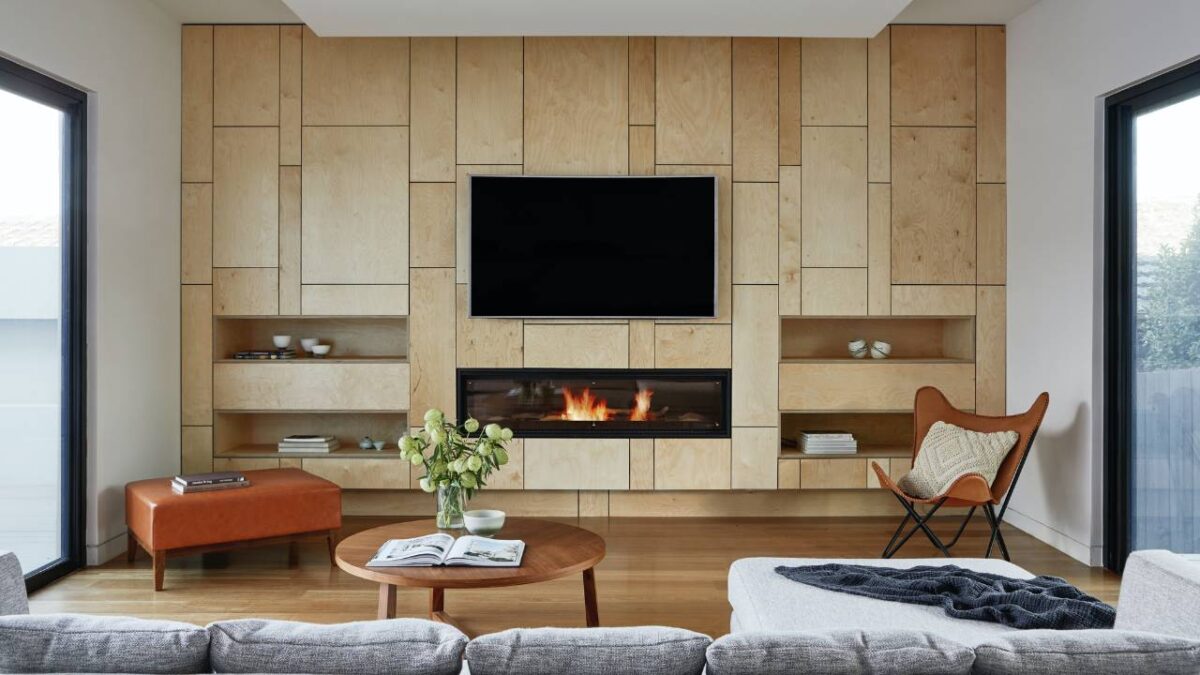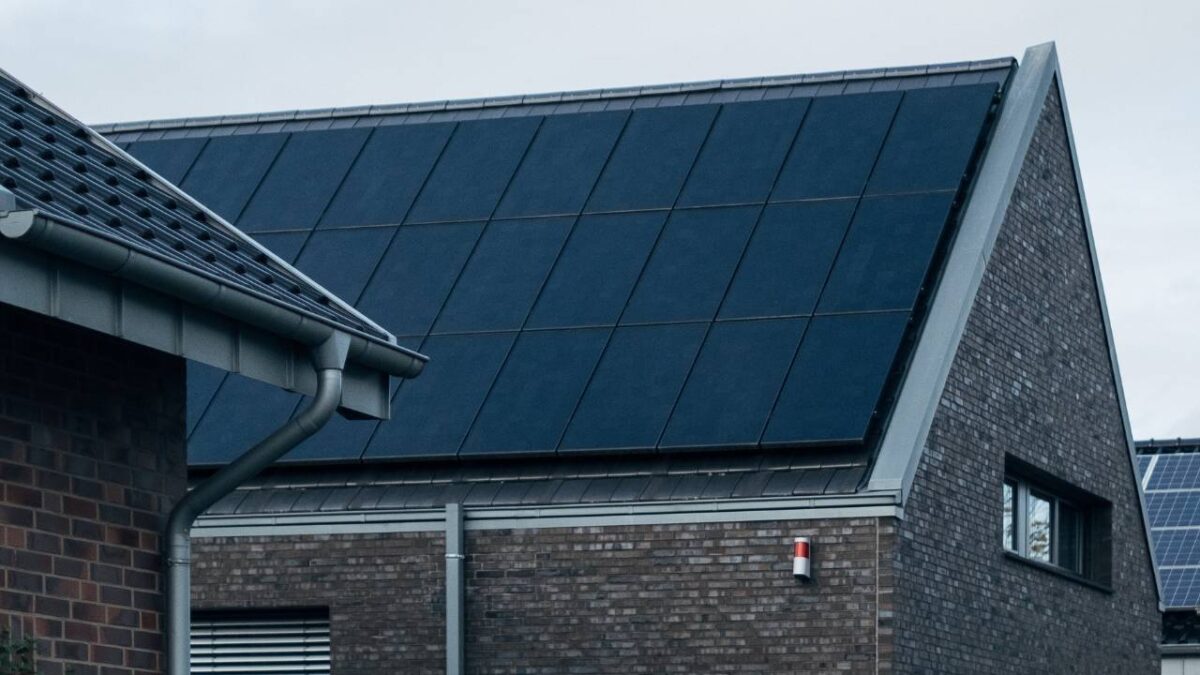Have you ever dreamed of living in a home that anticipates your every need and simplifies your daily routine? With the rise of smart home technology, this dream has become a reality. Smart home design has revolutionised modern living, offering homeowners unparalleled convenience and control.
Smart homes are equipped with a variety of devices and systems that can be controlled remotely through a smartphone or voice assistant. From lighting and temperature to security and entertainment, smart home technology allows you to manage every aspect of your home with ease. With the ability to automate routine tasks and adjust settings on the go, smart homes offer a level of convenience that was once unimaginable.
The Evolution of Smart Homes
You may think that smart homes are a new concept, but the truth is that they have been around for decades. The first smart homes were built in the 1970s, but they were expensive and only available to the wealthy.
The evolution of smart homes has been driven by advancements in technology, particularly the rise of connected devices and the Internet of Things. With more and more devices being connected to the internet, controlling them remotely has become much more accessible, making home automation easier than ever before.
The early home automation systems were basic, allowing homeowners to control their lights and heating remotely. However, as technology has advanced, so too have the capabilities of smart homes. Today, you can control almost every aspect of your home remotely, from your security system to your kitchen appliances.
One of the key benefits of smart homes is the ability to save energy and reduce your carbon footprint. For example, smart thermostats can learn your habits and adjust the temperature of your home accordingly, saving you money on your energy bills.
Smart homes are also becoming more affordable and accessible to the average homeowner. With the rise of DIY home automation systems, you no longer need to hire a professional to set up your smart home. You can do it yourself with off-the-shelf components and a little bit of technical know-how.
The Role of Big Tech in Smart Home Design

Smart home design has revolutionised modern living, making it more convenient, comfortable, and efficient. As the demand for smart homes continues to grow, big tech companies have played a significant role in shaping the industry. In this section, we will explore the impact of Amazon, Google, and Apple on smart home design.
Amazon’s Influence
Amazon has been a key player in the smart home industry, with its Alexa voice assistant leading the way. Alexa has become a household name, allowing users to control their smart home devices with simple voice commands. Amazon has also developed a range of smart home products, including the Echo, Echo Dot, and Echo Show, which have become popular choices for many homeowners.
Amazon’s impact on smart home design has been significant, with many devices now being designed to work seamlessly with Alexa. This integration has made it easier for users to control their smart home devices, creating a more streamlined experience. Amazon’s smart home ecosystem has also made it easier for users to discover new products and services, with the company’s online marketplace offering a wide range of compatible devices.
Google’s Contribution
Google has also made significant contributions to smart home design, with its Google Assistant voice assistant competing with Amazon’s Alexa. Google Assistant has become a popular choice for many users, offering a range of features and integrations with other Google products.
Google’s impact on smart home design has been focused on creating a more seamless and intuitive experience for users. The company’s Nest range of smart home products has been designed to work together, allowing users to control their entire home from a single app. Google has also worked on integrating its smart home products with other third-party devices, creating a more open ecosystem.
Apple’s Impact
Apple has been a latecomer to the smart home industry, but its HomeKit platform has gained popularity among Apple users. HomeKit allows users to control their smart home devices using Siri voice commands or the Home app on their iPhone or iPad.
Apple’s impact on smart home design has been focused on creating a more secure and private ecosystem. HomeKit devices are required to meet strict security standards, ensuring that users’ data is protected. Apple has also focused on creating a more user-friendly experience, with the Home app offering a simple and intuitive interface.
Key Components of a Smart Home

When it comes to designing a smart home, there are several key components that you should consider. These components can help to revolutionise the way you live, making your home more efficient, secure, and convenient. In this section, we will explore some of the most important components of a smart home.
Smart Speakers
Smart speakers are a popular component of many smart homes. These devices allow you to control your home using your voice, making it easier to manage your smart home devices. With a smart speaker, you can ask questions, set reminders, and control your smart home devices without ever leaving your seat.
Some of the most popular smart speakers on the market include Amazon Echo, Google Home, and Apple HomePod. These devices are compatible with a wide range of smart home devices, making them a great choice for anyone looking to create a smart home.
Security Cameras
Security cameras are an important component of any smart home security system. These cameras allow you to monitor your home from anywhere, giving you peace of mind when you’re away from home. With a security camera, you can keep an eye on your home and receive alerts if anything suspicious happens.
There are many different types of security cameras available, including indoor and outdoor models. Some cameras also come with advanced features such as facial recognition and motion detection.
Video Doorbells
Video doorbells are a popular component of many smart homes. These devices allow you to see who is at your door before you answer it, making it easier to screen visitors and keep your home secure. With a video doorbell, you can also communicate with visitors using your smartphone or smart speaker.
Some of the most popular video doorbells on the market include Ring, Nest Hello, and SkyBell. These devices are easy to install and can be integrated with other smart home devices.
Health Sensors
Health sensors are a newer addition to the world of smart homes. These devices allow you to monitor your health and well-being from the comfort of your own home. With a health sensor, you can track your heart rate, blood pressure, and other vital signs.
There are many different types of health sensors available, including wearable devices and smart scales. Some health sensors can also be integrated with other smart home devices, such as smart speakers and security cameras.
Energy Efficiency and Sustainability in Smart Homes

Incorporating energy efficiency and sustainability into smart home design is becoming increasingly important. Not only does it help reduce your carbon footprint, but it can also save you money on energy bills. Here are some ways to make your smart home more energy-efficient:
Solar, Wind and Water
Using renewable energy sources such as solar, wind and water can significantly reduce your reliance on traditional grid electricity. Solar panels can be installed on your roof or in your garden to generate electricity, which can be stored in a battery for later use. Similarly, wind turbines and water turbines can be installed on your property to generate electricity.
In addition to reducing your reliance on grid electricity, using renewable energy sources can also make you eligible for government incentives and rebates.
Microgrids
A microgrid is a small-scale, self-contained power system that can operate independently of the main power grid. By incorporating a microgrid into your smart home, you can ensure that you always have access to electricity, even during power outages.
Microgrids can be powered by renewable energy sources such as solar, wind and water or by traditional fossil fuels. They can also be connected to the main power grid, allowing you to sell excess energy back to the grid.
Using a microgrid in your smart home can also help reduce your carbon footprint and save you money on energy bills.
Comfort and Functionality in Smart Home Design
When it comes to designing your smart home, you want to make sure that it is not only functional but also comfortable. After all, your home is the place where you spend most of your time, and you want it to be a space that you enjoy being in.
One of the key benefits of smart home design is that it can help improve the comfort of your living space. With smart thermostats, you can easily control the temperature of your home to ensure that it is always at the perfect level. You can also use smart lighting to create a warm and inviting atmosphere or even set up a smart entertainment system that allows you to enjoy your favourite movies and music from anywhere in your home.
But comfort isn’t just about temperature and lighting. It’s also about the functionality of your home. With smart home technology, you can automate many of the tasks that would otherwise take up your time and energy. For example, you can set up a smart vacuum cleaner that cleans your floors while you relax on the sofa or a smart fridge that reminds you when you’re running low on groceries.
In addition to improving the comfort and functionality of your home, smart home design can also help you save money on your energy bills. By automating your heating and lighting, you can ensure that you are only using energy when you need it and not wasting it when you’re not at home.
Control Options in Smart Homes
Smart homes are designed to make your life easier, and one of the ways they do that is by giving you more control over your living environment. There are two main control options in smart homes: voice commands and manual controls.
Voice Commands
With voice commands, you can control your smart home devices using your voice. This is a great option for people who want to control their devices hands-free. You can use voice commands to turn on lights, adjust the temperature, play music, and more.
To use voice commands in your smart home, you’ll need a smart speaker or a smart display. Some of the most popular options include Amazon Echo and Google Home. These devices use voice recognition technology to understand your commands and send them to your smart home devices.
Manual Controls
Manual controls give you more traditional control over your smart home devices. With manual controls, you can use a physical button or switch to turn on lights, adjust the temperature, and more. This is a great option for people who prefer physical controls or who don’t want to rely on voice commands.
Many smart home devices come with manual controls built-in. For example, smart thermostats often have physical buttons that allow you to adjust the temperature without using a voice command. Some smart light switches also have physical buttons that allow you to turn on the lights without using your voice.
Cybersecurity and Privacy in Smart Homes

When it comes to smart home design, cybersecurity and privacy are crucial factors that need to be considered. With the increasing number of connected devices in our homes, it’s important to ensure that your personal information and data are safe from cyber threats.
One of the main privacy concerns associated with smart homes is the potential for surveillance. Smart cameras and other monitoring devices can be used to keep an eye on your home, but they can also be used to spy on you and your family. As such, it’s important to choose devices that have strong security features and to use them responsibly.
To protect your privacy, consider the following tips:
- Use strong passwords for all of your smart devices and change them regularly.
- Keep your devices updated with the latest security patches and firmware updates.
- Use a virtual private network (VPN) to encrypt your internet traffic and protect your online privacy.
- Be cautious about sharing personal information with smart devices and apps.
In addition to privacy concerns, cybersecurity is also an important consideration when it comes to smart homes. Hackers can exploit vulnerabilities in your smart devices to gain access to your network and steal your personal information.
To protect your home from cyber threats, consider the following tips:
- Use a strong and secure Wi-Fi password to protect your network.
- Enable two-factor authentication on all of your smart devices to add an extra layer of security.
- Use a firewall to block unauthorised access to your network.
- Regularly scan your network for vulnerabilities and take steps to address any issues that are identified.
The Future of Smart Home Design
As technology advances, so does the potential for smart home design. The future of smart homes will be characterised by more intelligent and intuitive systems, with a focus on improving the quality of life for homeowners. Here are some of the trends that are likely to shape the future of smart home design:
Artificial Intelligence
As artificial intelligence (AI) technology continues to improve, we’ll likely see more AI-powered smart home systems. These systems will be able to learn your habits and preferences and adjust settings automatically to suit your needs. For example, your smart home system might learn that you like to have the lights dimmed in the evening and automatically adjust the lighting accordingly.
Cutting-Edge Home Tech
The future of smart home design will also be characterised by cutting-edge home tech. This might include things like smart mirrors that can analyse your skin and provide personalised skincare recommendations or smart fridges that can track your food inventory and suggest recipes based on what you have on hand.
Energy Efficiency
Another key trend in smart home design will be a focus on energy efficiency. Smart home systems will be able to monitor your energy usage and suggest ways to reduce your consumption, such as by turning off lights when you’re not in a room or adjusting your heating and cooling settings to minimise energy waste.
Overall, the future of smart home design is exciting and full of potential. With the right technology, smart homes can revolutionise the way we live, making our lives more comfortable, convenient, and sustainable.
Conclusion
The benefits of smart home design are clear. It allows for greater convenience, energy efficiency, and security. You can control your home’s systems remotely, monitor your energy usage, and receive alerts if there are any issues with your security system.
However, it’s important to note that smart home design is not without its challenges. There are concerns about privacy and security, as well as the cost of implementing these technologies.
Still, smart home design is a promising trend that has the potential to make our lives easier and more efficient. As technology continues to advance, we can expect to see even more innovative solutions in the world of smart homes.






